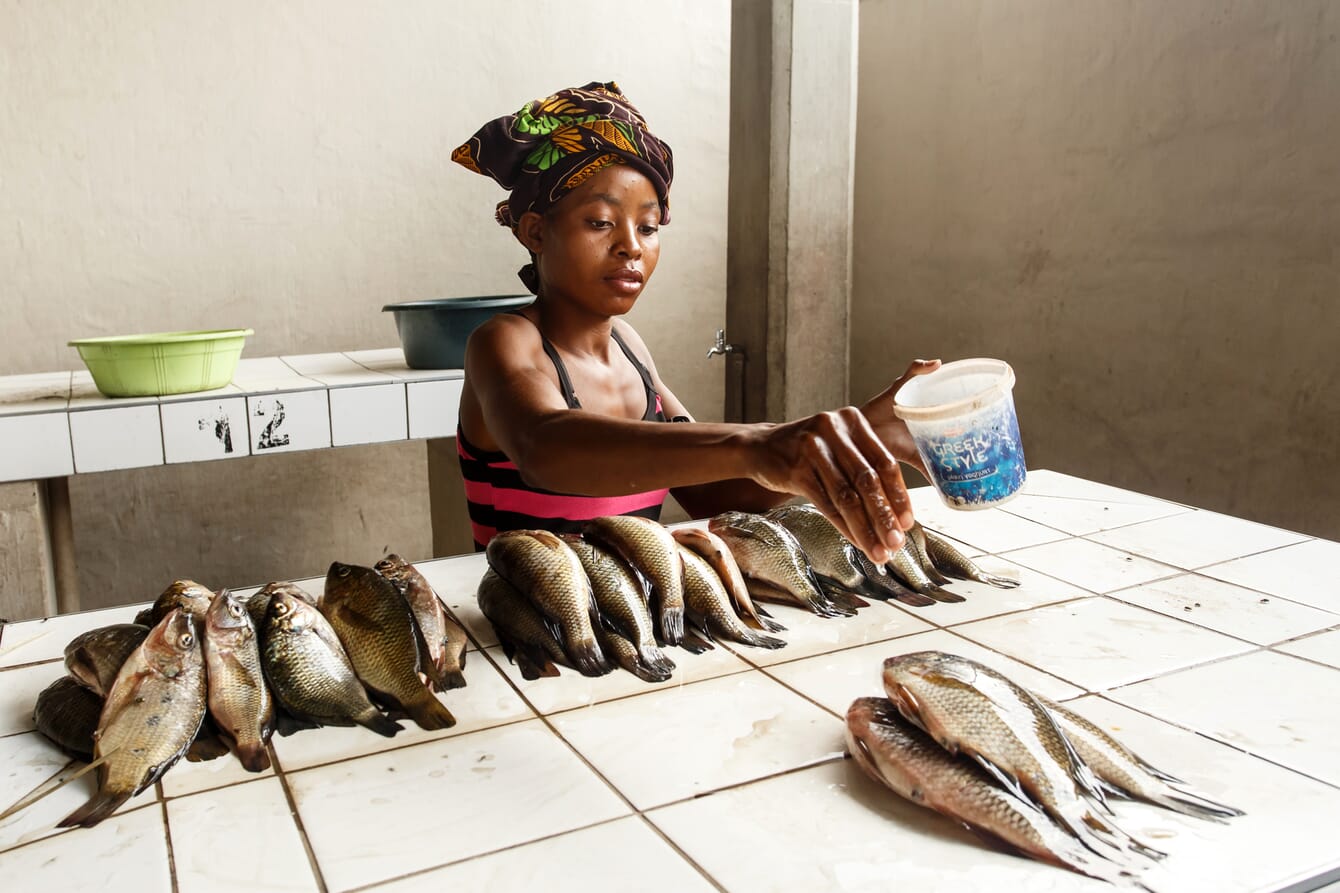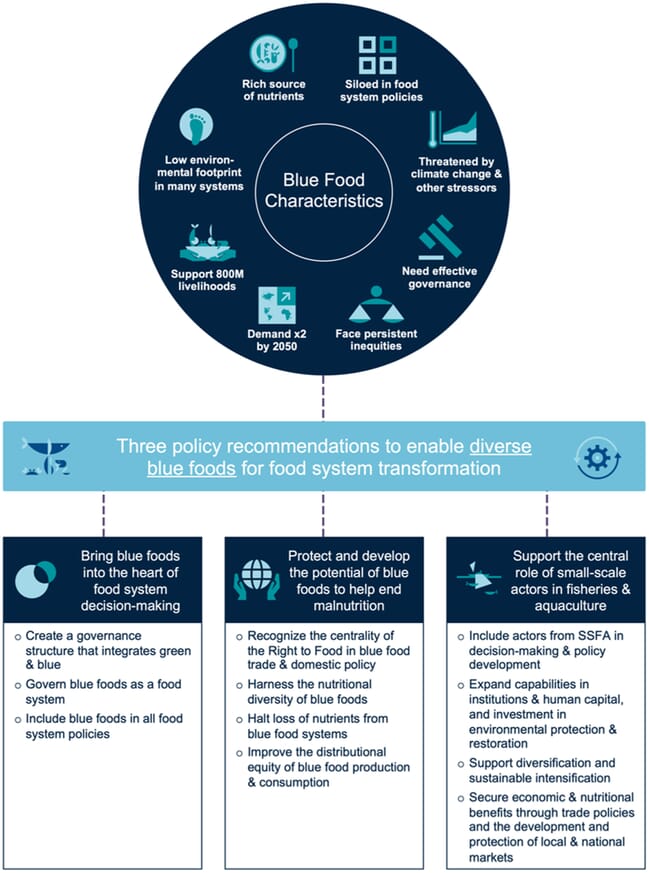
© Sam D Cruz, Shutterstock
As part of last year’s United Nations Food Systems Summit (UNFSS) agenda-setting process, members of the Blue Food Assessment team were invited to contribute a Food Systems Summit Brief in cooperation with the Scientific Group for the UNFSS. This brief, The Vital Roles of Blue Foods in the Global Food System, highlighted the importance of aquatic foods to global food dialogues.
A recent peer-reviewed publication in Global Food Security (Tigchelaar et al. 2022) expands on the recommendations and includes examples of blue food systems.

This diagram shows three policy action domains to assist national-level government decision-makers to realise the potential of blue foods in improving food system outcomes (click on image to enlarge) © Tigchelaar et al, 2022
In the paper, members of the Blue Food Assessment team argue that to ensure blue foods continue to make a significant contribution to global food systems, governments need to incorporate them in their food-related decision-making. By combining recent blue food science, examples of management approaches and other evidence, the paper can serve as a resource for blue food transformation into the future.
Background
Blue food systems are extraordinarily diverse, involving thousands of species in many different production systems and supporting a wide array of cultures and diets. Many blue foods are rich in bioavailable micronutrients and can be produced in ways that are more environmentally sustainable than terrestrial animal-source foods.
Yet despite their unique value and interconnections with terrestrial food systems, blue foods are often left out of food system analyses, discussions, decisions, and solutions.
Realising the potential of blue foods to play a central role in ending malnutrition and in building healthy, nature-positive, and resilient food systems will require that governments embed blue foods in food-system governance. Given this, the team focused on three policy recommendations to enable diverse blue foods for food system transformation:
- Bring blue foods into the heart of food system decision-making.
- Protect and develop the potential of blue foods to help end malnutrition.
- Support the central role of small-scale actors in fisheries and aquaculture.


